Board Paper Making Line
A Board Paper Making Line refers to the complete set of equipment and machinery used to manufacture board paper from raw materials, typically wood pulp, recycled paper, or other fibers. This process involves several stages, including pulping, sheet formation, drying, pressing, and finishing. The end product is typically used for various applications such as packaging, construction, and other industrial uses.
Key Components of a Board Paper Making Line:
- Pulping Section:
- Pulping Machine: Raw materials (wood, recycled paper) are processed into pulp. This is often done by mechanical, chemical, or semi-chemical methods to break down the fibers into a slurry.
- Stock Preparation: The pulp is then refined and blended to achieve the desired consistency and properties. It may involve cleaning, refining, and adding chemicals or additives to enhance qualities like strength, brightness, or water resistance.
- Forming Section:
- Fourdrinier Wire Machine: This machine forms the pulp slurry into a continuous sheet. The slurry is spread on a moving wire mesh, allowing the water to drain away, and the fibers begin to bond together.
- Headbox: This part controls the uniform distribution of the slurry onto the forming wire, ensuring consistent sheet formation.
- Pressing Section:
- Press Rolls: After the paper sheet is formed, it passes through a series of press rolls to remove more water and compact the fibers to increase density and smoothness.
- Drying: The paper is then passed through heated drying cylinders to evaporate the remaining water content, ensuring that the paper reaches the desired moisture level.
- Drying Section:
- Drying Cylinders: A series of large cylinders heated by steam or other methods to remove the remaining moisture from the paper and set the fibers.
- Calender Rolls: These are used to further smooth and compact the paper to the desired thickness and texture.
- Reeling and Cutting:
- Reeler: After drying, the paper is wound onto large rolls called parent rolls.
- Slitter: The parent rolls are then slit into smaller rolls or sheets of board paper, depending on the intended use.
- Finishing Section:
- Coating (Optional): Some board paper may go through a coating process for additional strength, smoothness, or printing purposes.
- Cutting: The final product is cut to the required size and packaged for shipment.
Types of Board Paper Made:
- Corrugated Board: Used primarily in packaging, particularly for boxes and cartons.
- Grey Board: Often used for rigid boxes, book covers, and packaging materials.
- Chipboard: Used in applications like packaging, furniture, and sometimes as a base for other products.
- CUP (Coated Unbleached Paperboard): Used for food packaging like cups and containers.
Environmental Considerations:
Many modern board paper making lines incorporate recycling and energy efficiency features. Some common practices include:
- Using recycled paper as a raw material to reduce environmental impact.
- Reducing water consumption by implementing closed-loop water systems.
- Energy-efficient drying methods and waste-to-energy solutions.
A Board Paper Making Line is essential for producing high-quality, durable paperboard used in packaging and various other industrial applications. Would you like to dive deeper into any specific part of the process or the machinery involved?
-
 350,000 tpy Linerboard Project in Arkhangelsk, RussiaGet details
350,000 tpy Linerboard Project in Arkhangelsk, RussiaGet detailsYunda Successfully Signs Contract for the 350,000 tpy Linerboard Project in Arkhangelsk, Russia, with Inner Mongolia Yunchou In April 2025, Yunda successfully signed a contract with Inner Mongolia Yunchou Technology Co., Ltd. for the supply of a complete set of pulping equipment for the 350,000 tpy linerboard project in Arkhangelsk, Russia. The project features a…
-
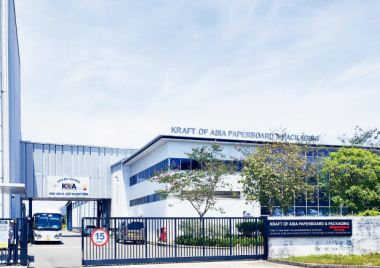 KOA Vietnam 6600/1100 Packaging Paper Upgrade ProjectGet details
KOA Vietnam 6600/1100 Packaging Paper Upgrade ProjectGet detailsYunda Wins Screening System Order for KOA Vietnam 6600/1100 Packaging Paper Upgrade Project In June 2025, Yunda secured the screening system order for the 6600/1100 packaging paper upgrade project of Kraft of Asia (KOA) Paper in Vietnam. The scope of supply includes a fractionation screening system, fine screening system, as well as spare parts. Through…
-
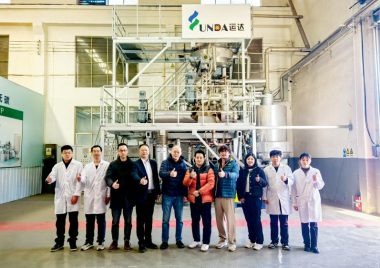 Smooth Shipment of Complete Thermo Mechanical Pulping Equipment for Thailand Precise Molding ProjectGet details
Smooth Shipment of Complete Thermo Mechanical Pulping Equipment for Thailand Precise Molding ProjectGet detailsIn July 2025, the complete set of thermo mechanical pulping equipment supplied by Yunda for the Thailand Precise Molding Project was successfully shipped. The raw material for this project is locally sourced bamboo from Thailand. The scope of supply includes a high-temperature defibrator, pulp separator, high-consistency reaction tower, steam bin, plug screw feeder, belt conveyor…
-
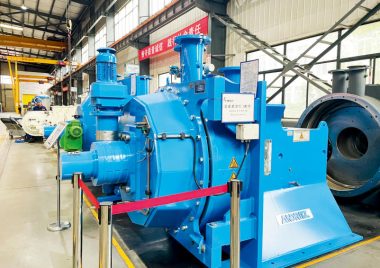 Successful Delivery of the Refiner Repair Project Between Yunda and Guangzhou Paper GroupGet details
Successful Delivery of the Refiner Repair Project Between Yunda and Guangzhou Paper GroupGet detailsIn May 2025, the refiner repair project for the European brand TF42S, undertaken by Yunda for Guangzhou Paper Group Co., Ltd., was successfully completed.Since launching its professional service vehicle business in 2022, Yunda has focused on addressing the repair challenges of pulping equipment such as high-consistency refiners, drum pulpers, and low-consistency refiners—equipment known for their…
-
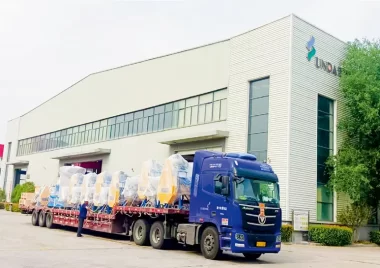 100,000 Tons Per Year Cultural Paper Project in EthiopiaGet details
100,000 Tons Per Year Cultural Paper Project in EthiopiaGet detailsSuccessful Delivery of 100,000 TPA Cultural Paper Project for Wenzhou Nixin Trading Co., Ltd. in Ethiopia In May 2025, Yunda successfully completed the delivery of a full stock preparation and approach flow system for Wenzhou Nixin Trading Co., Ltd.’s 100,000 tons per annum cultural paper project in Ethiopia. The paper machine features a net paper…
-
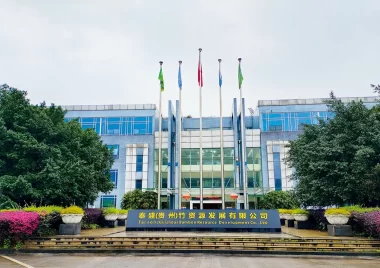 Taison (Guizhou) 160,000 tons tissue paper projectGet details
Taison (Guizhou) 160,000 tons tissue paper projectGet detailsThe complete pulp production line supplied by Yunda for Taison (Guizhou) 160,000 tons tissue paper project has entered the commissioning stage. On June 16, 2025, the complete set of pulp production equipment for Taison (Guizhou) Bamboo Resources Development Co., Ltd.’s 100,000 tons tissue paper project was fully installed and has now entered the commissioning phase.…
-
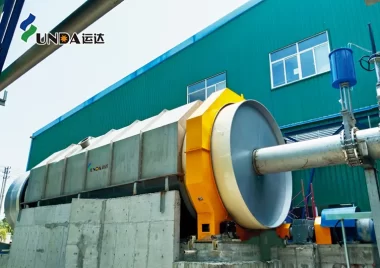 Taison Tissue Paper ProjectGet details
Taison Tissue Paper ProjectGet detailsThe key pulping equipment supplied by Yunda for the Taison (Jiangxi) tissue paper project has entered the final installation stage. In August 2025, the key pulping equipment supplied by Yunda for the tissue paper project of Taison(Jiangxi) Household Products Co., Ltd. entered the final installation stage. The scope of supply includes key equipment such as slat conveyors, high-consistency pulpers, drum…
-
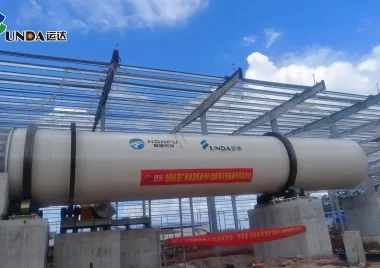 Guangxi Xiongfu Paper ProjectGet details
Guangxi Xiongfu Paper ProjectGet detailsThe φ3750 mm drum pulper supplied by Yunda to Guangxi Xiongfu Paper Industry has been successfully hoisted. On July 2, 2025, the φ3750 mm drum pulper supplied by Yunda for Guangxi Xiongfu Paper Co., Ltd.’s 300,000-ton high-end specialty paper project was successfully hoisted. Guangxi Xiongfu Paper Co., Ltd., located in Laibin City, Guangxi, China, focuses…
-
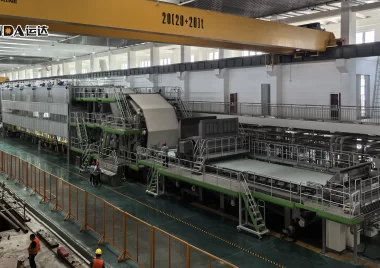 Jincailun Paper PM18 Cultural Paper ProjectGet details
Jincailun Paper PM18 Cultural Paper ProjectGet detailsShandong Jincailun Paper PM18 Cultural Paper Project Successfully Started Up In May 2025, the complete stock preparation and approach flow system supplied by Yunda for Shandong Jincailun Paper’s PM18 cultural paper project was successfully started up. The paper machine for this project has a trimmed width of 2,640 mm. The supply scope includes a bale…
-
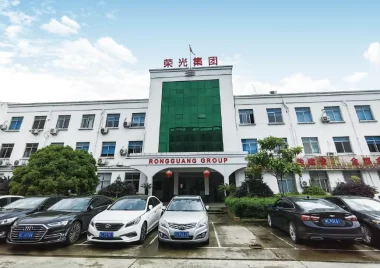 Rongwei Industrial’s 120,000-Ton Packaging Paper Project in CambodiaGet details
Rongwei Industrial’s 120,000-Ton Packaging Paper Project in CambodiaGet detailsYunda Wins Order for Rongwei Industrial’s 120,000-Ton Packaging Paper Project in Cambodia In May 2025, Yunda successfully signed a contract with Rongwei Industrial Co., Ltd. to provide a complete stock preparation and approach flow system for its 120,000-ton packaging paper project in Cambodia. The project mainly produces cardboard paper, corrugated paper, and testliner. The supply scope includes:◆…
-
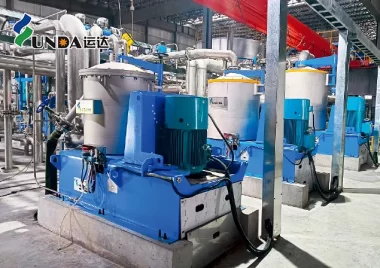 Lopie Paper 80,000-ton tissue paper projectGet details
Lopie Paper 80,000-ton tissue paper projectGet detailsYunda’s OCC pulping line supplied for Guigang Lopie Paper Group’s 80,000-ton tissue paper project was successfully started up. In March 2025, the market pulp processing line and broke handling system supplied by Yunda for Guigang Lopie Paper Group Co., Ltd.’s 80,000-ton tissue paper project were successfully started up. Subsequently, in April, the OCC pulping line provided by…
-
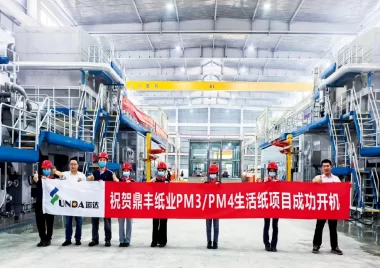 Guangdong Dingfeng Paper PM3 and PM4 tissue paper projectGet details
Guangdong Dingfeng Paper PM3 and PM4 tissue paper projectGet detailsThe Guangdong Dingfeng Paper PM3 and PM4 tissue paper project has officially started production, with production technology and key process equipment provided by Yunda. In May 2025, the key pulping equipment provided by Yunda for Guangdong Dingfeng Paper Co., Ltd.’s PM3/PM4 tissue paper project was successfully put into operation. The scope of supply included: bale breaker, medium-consistency…
-
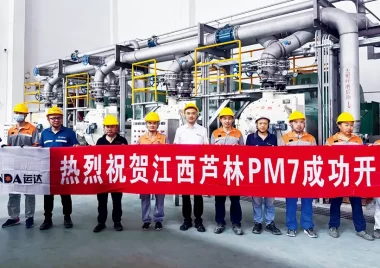 Jiangxi Lulin’s 200,000-ton packaging paper projectGet details
Jiangxi Lulin’s 200,000-ton packaging paper projectGet detailsThe complete stock preparation system and approach flow system supplied by Zhengzhou Yunda for the PM7 line of Jiangxi Lulin’s 200,000-ton packaging paper project has been successfully put into operation. Developed with Yunda’s strong R&D capabilities, the system was engineered to optimize both production efficiency and energy consumption from the start. Moving forward, Zhengzhou Yunda…
-
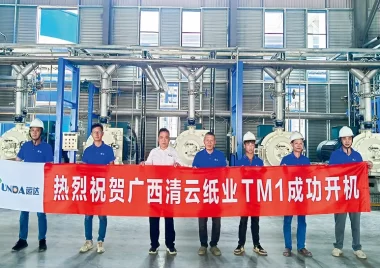 Guangxi Qingyun Tissue Paper projectGet details
Guangxi Qingyun Tissue Paper projectGet detailsZhengzhou Yunda provided a complete set of pulping and approach flow systems for Guangxi Qingyun Paper Industry’s 150,000-ton annual production project of tissue paper, which has successfully been put into operation. The system adopts a modular design concept and intelligent control solutions, providing a solid guarantee for the project’s efficient and stable operation. On May 27,…
-
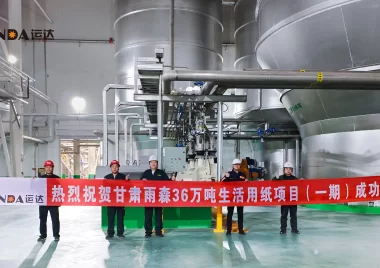 Gansu Yusen Tissue PaperGet details
Gansu Yusen Tissue PaperGet detailsOur customer Yusen Group was Founded in 2006, Yusen Group is an integrated enterprise engaged in the research and development, production, and sales of tissue paper and sanitary products. It has been awarded “Craftsmanship Product of the Chinese Tissue Paper Industry” for three consecutive years and ranks among the top ten in the industry. The…
